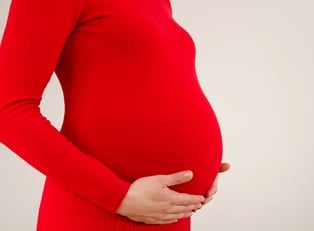A cesarean, or C-section, is the surgical removal of Baby when there are more risks than benefits associated with vaginal birth. The risks of childbirth are greater for middle aged women than younger ones. If you are over 35, you may very well have a safe and healthy vaginal birth. However, you are also more likely to deliver your baby through C-section for both you and your baby’s health.
Considering the Statistics
Approximately 12% of first time mothers deliver babies through cesarean sections when the mothers are under 35. By the time women reach age 40, approximately 43% of first time mothers may deliver through cesareans. Why the huge rise? As you become older, you become increasingly likely to experience complications during your pregnancy, making you more likely to deliver through a C-section.
Reasons for a C-Section After 35
C-sections can be much safer than a vaginal birth, but only when there are complications involved that make a vaginal birth dangerous. Among the more common reasons for a c-section, particularly after age 35, are delivering multiple babies, breech babies, or if you have a complicating illness. Multiple babies are more likely when a mother chooses to use infertility treatments, which are also more common in women over 35. The more babies the delivery team has to deliver, the more likely they are to opt for a C-section delivery.
Other Considerations
For mothers over 35, even if there are no other issues present, age alone may be enough to merit a cesarean. Your body may be more predisposed toward birthing challenges that lead you toward having a C-section. Also important to note are the findings of a study in San Francisco of more than 8,000 first time mothers. The older the women were, the more time they spent in labor during vaginal delivery of full term babies. Age may be a factor in the time required for cervical dilation and pushing.
Additionally, the changes in uterine flexibility leading to a c-section may actually start in the early 20s. This suggests that moms who need a C-section after 35 were less likely to delivery vaginally no matter their age. In short, older moms may, under obstetrical advice, choose a C-section to avoid a longer, more painful delivery than younger moms.
Risks of a C-Section
From an outside perspective, a cesarean may seem easier and less painful than a vaginal birth. Not true. In fact, C-sections actually require a longer hospital stay and increased length of recovery time for new mothers. Full recovery for mothers can take 3-4 times as long as vaginal delivery.
A cesarean delivery can also increase the risk of infections, as do nearly all surgeries. Other complications moms may face include extensive blood loss, clotting, side effects from anesthesia or the procedure itself (such as vomiting or severe headaches), gastrointestinal problems, or internal organ damage. Maternal death occurs in about 0.002% c-sections. Risks for Baby include injury, a stay in the neonatal intensive care unit, or premature delivery when a c-section is chosen before the mother goes into labor. However, many if not most c-section deliveries result in few difficulties.
Another important note to make is that once a mother has given birth by cesarean section, subsequent births must often use the same method. Whether you are considering a cesarean delivery or hoping for a standard vaginal birth, talk to your obstetrician about what’s going to be best for you and your baby. Remember that no midwife is qualified to perform a C-section. So age may be a factor requiring a traditional doctor when there are more risk factors present in your pregnancy.



